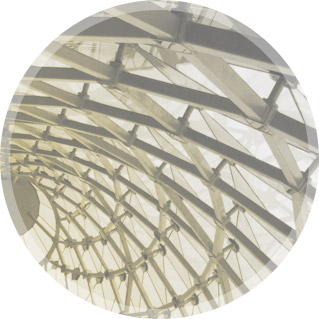Massachusetts Institute of Technology
School of Architecture and Planning
MIT Architecture is shaped by MIT’s architecture. From our front door on Massachusetts Avenue, this architecture is imposing, classical, and apparently immutable. Yet the physical and intellectual innovations that MIT has produced — scientific frameworks and inventions, social and humanistic insights, new methods of thinking and making — course around the world and have remade it several times over. The resulting tension between speed and heaviness, and between lightness and gravity, is most beautifully captured in the ephemeral and enduring culture of hacking MIT’s own architecture: the illicit adornment of domes and towers with fire engines, Daleks, Lunar Landers, subway cars and Star Wars droids. While superficially vandalizing the Institute, they also serve as the best representation of its essential, improbable identity.
http://architecture.mit.edu/
Setting
MIT is an integral part of its host city of Cambridge, a diverse and vibrant community noted for its intellectual life, history, and thriving innovation climate. With a campus nestled between Central and Kendall Squares, and across the Charles River from Boston’s Back Bay, the Institute is optimally positioned to collaborate with its neighbors and to contribute to its community.
At MIT, we revel in a culture of learning by doing. In more than 30 departments across five schools and one college, our students combine analytical rigor with curiosity, playful imagination, and an appetite for solving the hardest problems in service to society. From science and engineering to the arts, humanities, social sciences, and interdisciplinary programs, we offer excellence across the board.
School Philosophy
Below the roofline, MIT’s architecture is largely given over to labs and shops — places in which things are measured, charted, discovered, and optimized. But our discipline is also profoundly shaped by irrational creativity and inescapable political realities. Creativity, history, politics and technology are all present at MIT, but in this Department, they live, work, and invent together.
The organizational architecture of our department reflects this reality. Groups of faculty in the arts, design and urbanism, computation, building technology, and history and theory, are all amongst the very best of the world, and organize themselves into discipline groups to serve groups of advanced students. Our undergraduate and professional degrees connect these groups, as our faculty work together to model architecture’s unique integration of diverse modes of thinking and making.

Programs
The Department of Architecture is one of five divisions within the MIT School of Architecture + Planning. The other divisions are: the Department of Urban Studies and Planning; the Media Lab and its Program in Media Arts and Sciences; the Program in Art, Culture, and Technology; the Center for Real Estate; and the Norman B. Leventhal Center for Advanced Urbanism.
The Department is structured in five discipline groups: Architecture + Urbanism; Building Technology; Computation; History, Theory and Criticism of Architecture and Art; and the Aga Khan Program for Islamic Architecture.
The Department houses thirty-seven permanent faculty, of whom three are under-represented minorities and fifteen are women. Across this past year, we were joined by another twenty-three visiting faculty, lecturers, and instructors across our curriculum. Twenty researchers help staff our labs and workshops.
In 2022, we housed 172 Master’s students across our MArch and Master of Science degrees, 45 PhD students, and many hundreds of undergraduates across our courses, including 32 Architecture Majors, 15 Art and Design Majors, and 17 Minors. Our population of 280 students is a balance of 47% US, and 53% international students, representing over 45 countries.
Graduate students number 217, with 131 women and 100 men. The undergraduate students number 49, with about 35 women and 13 men, and 1 unspecified. 20% of our US-based graduate students and 11% of our US-based undergraduates identify as POC.
We are engaging this year in new actions to increase the diversity of our student population and to create an environment that welcomes, includes, and empowers all members of our community. These include new initiatives in outreach, admissions, mentorship, and equity within the Department. Details of these efforts, and our conversations about them, can be found in the News section of this website.

of Focus
1. Art & Design
2. Digital Fabrication & Technology
3. Building Technologies
4. History | Theory | Criticism
5. Cross-Cultural Contexts | Human Experiences
6. Urbanism
7. Digital Design & Visualization
8. Sustainability & High-Performance Built Environments

Opportunities

Facilities

Policies
Transfer Policies
The MIT undergraduate transfer application is intended for students who have finished high school and will have completed at least one year of college before entering MIT. If you are still in high school, you are considered a first-year applicant regardless of how many classes you may have taken at the university or college level.
Students who at the time of entry to MIT will have completed at least two terms of study with high academic standing at an accredited college, university, technical institute, or community college may apply for transfer admission. If you are in your first year of college, the earliest you can apply to transfer to MIT is during your second term of study.
Students who at the time of entry to MIT will have completed more than two and a half years (five terms/semesters) of college may not be eligible because of our residency requirements.
If you have been enrolled in college part-time, calculate your full-time term equivalency to estimate your eligibility. Eligibility will be formally assessed by the Admissions Committee in the application review process.


